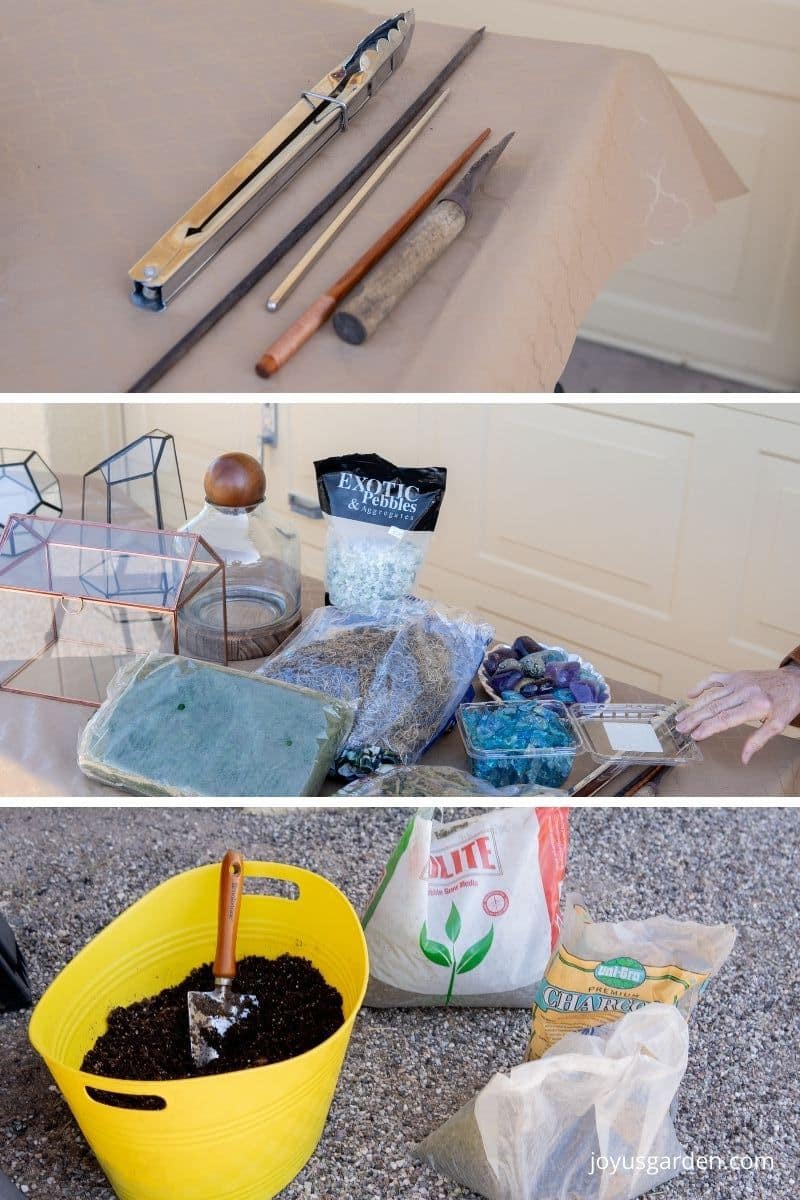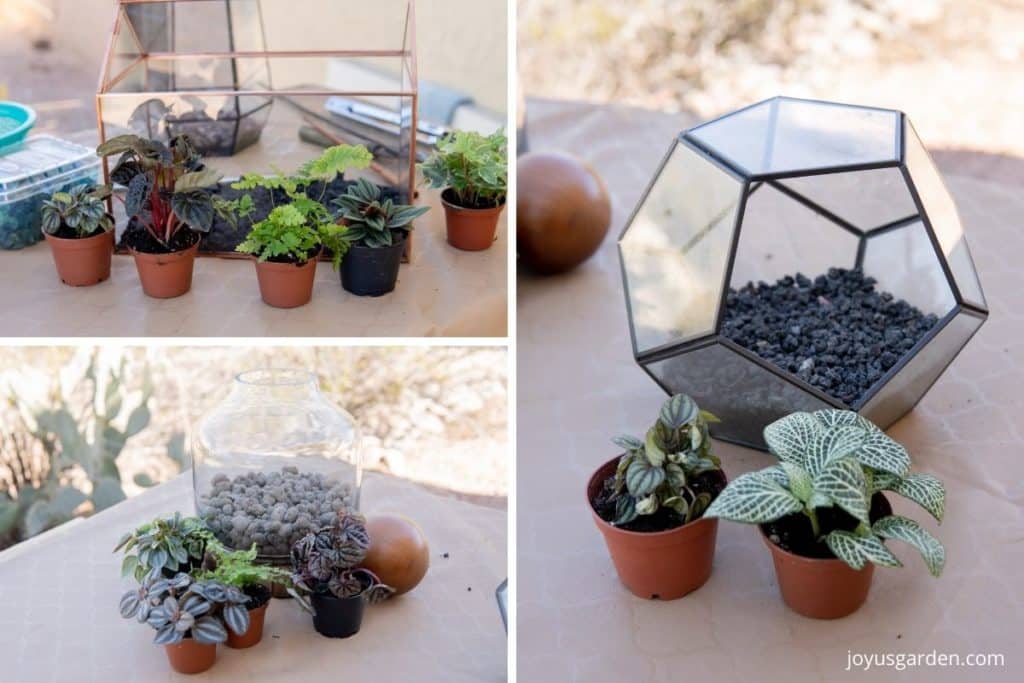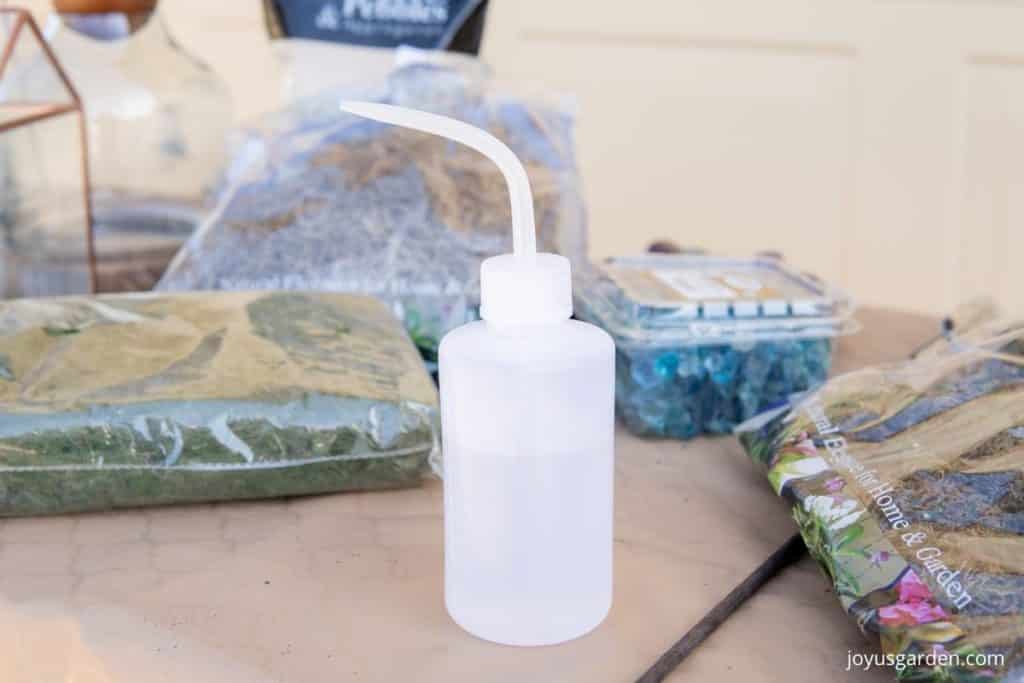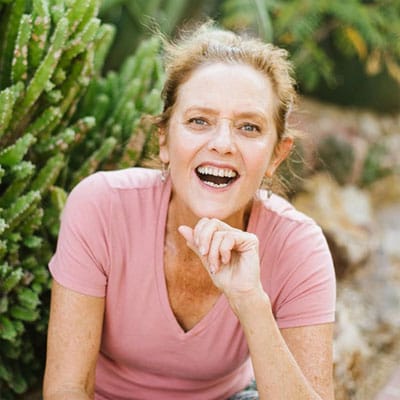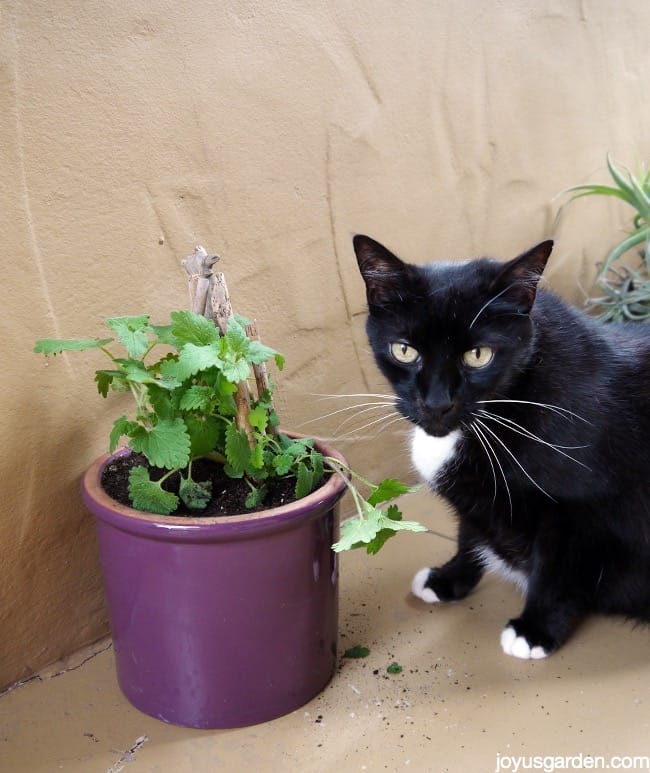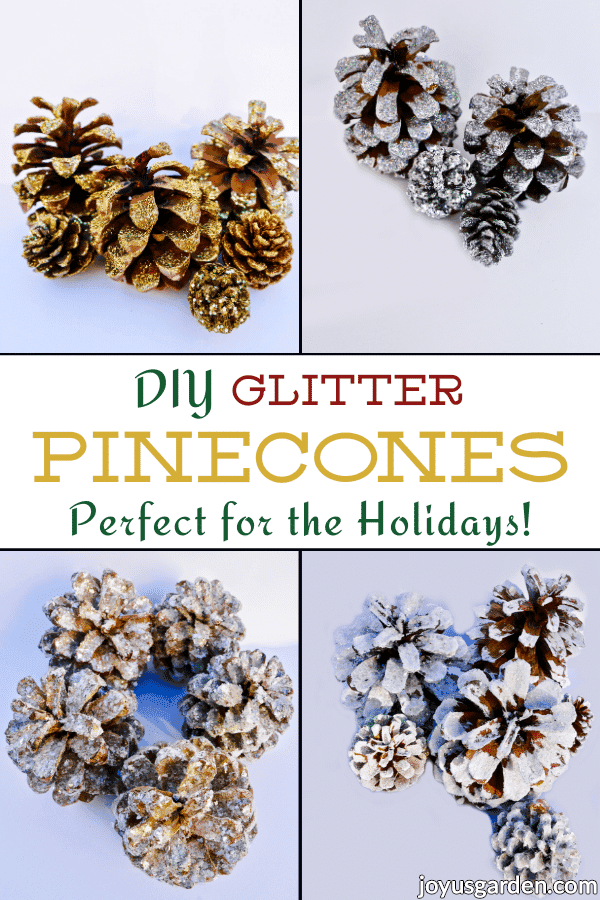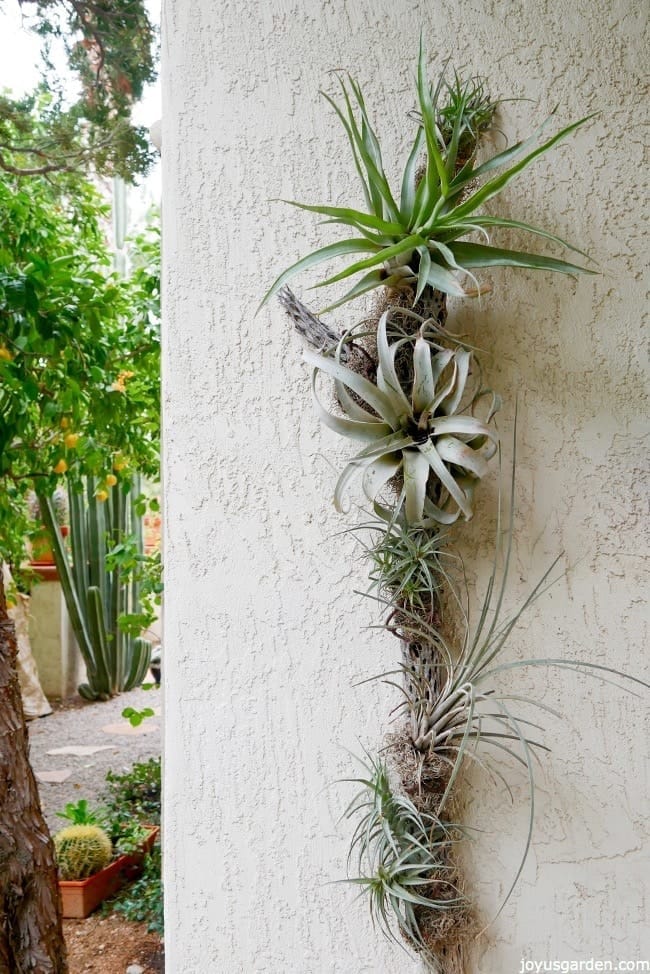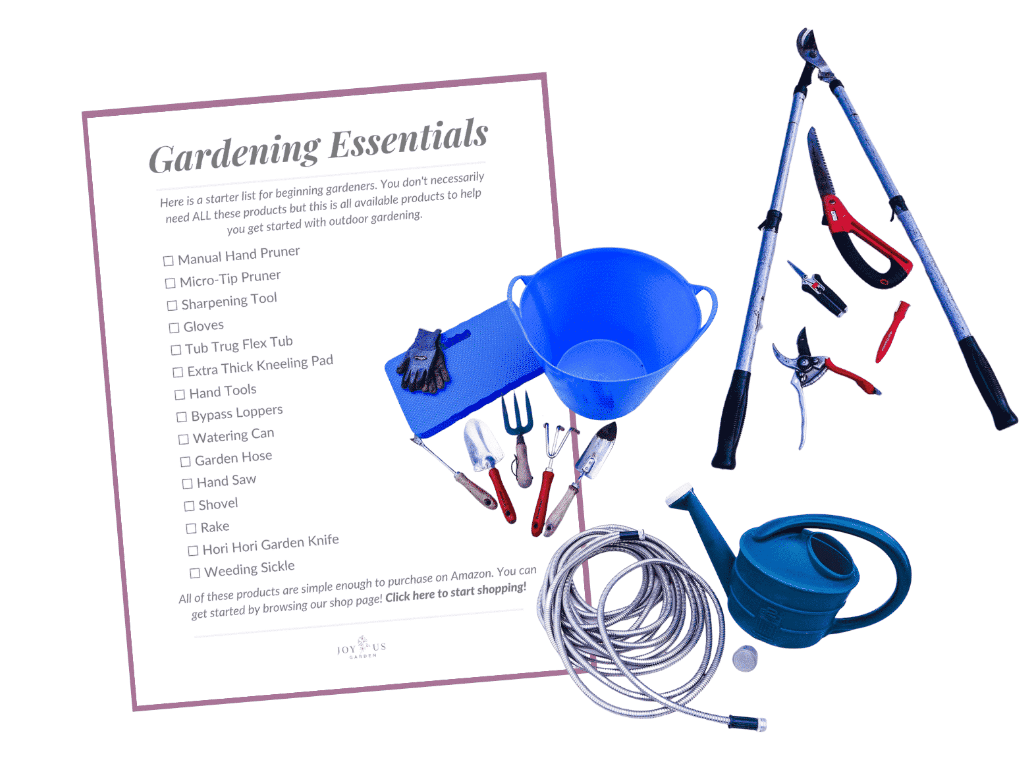How to Make A Terrarium: 4 DIY Terrarium Ideas
Terrariums are a fun DIY gardening project. I think of them as living art. Here you’ll learn how to make a terrarium in four ways including container choice, plant choice, steps, care, and things good to know.
What is a terrarium? They became popular in the 1800s for growing ferns. There are many definitions but here’s a straightforward one: “a sealed transparent globe or similar container in which plants are grown.”
A closed terrarium is self-sustaining. Some say terrariums are partially open, closed, or both. They all look good but their care differs.
I grew up in the New England countryside long before the onset of the internet. I was big on all kinds of DIYS to keep me entertained and creating a homemade terrarium was one of them. I haven’t made a terrarium in 50 years and Brielle has never made one so this was an adventure caught on video.
As a kid, I used fish bowls and jars for containers and gathered Princess Pine and mosses from the woods along with cuttings from my father’s greenhouse. It’s time to up my terrarium game. I bought containers and plants this go-round.
You’ll see 4 four different styles of terrariums made here and in the video, two by Brielle and two by me.
In five words: terrariums are miniature, indoor gardens. Be creative and enjoy the process!
Terrarium Containers
There are many to choose from in regards to size, shape, trim color, style, open container or closed container, and price. Just make sure it’s a glass container as you want to see your beautiful terrarium.
If you’re new to this, open terrariums with larger openings are easier to plant and work on.
You can see the terrarium containers that we used in the photo above.
No need to buy a container as you can always use a mason jar as well as goldfish bowls or cookie jars that you’re not using.
Check out our Containers For Terrariums guide to give more size, shape, and style choices.
Terrarium Plants
Plants that require moderate to high humidity do best, especially in closed terrariums. I wouldn’t use succulents because they don’t like to stay moist nor do they need the humidity. If you want to use them, I’d recommend an open container.
Slower-growing tropical plants do better over the long haul because you won’t need to prune or replace them as often. Smaller plants, in 2″ and 3″ grow pots, are the easiest to work when using the average-sized container.
I bought these plants on Etsy. The majority of local garden centers don’t carry plants this small because of maintenance reasons. Once planted in a terrarium, taking care of them is a snap!
Here are some terrarium plant choices: ferns, ivy, foliage begonias, polka dot plant, nerve plant, peperomias, mosses, selaginella, neanthe bella palm, crotons, baby’s tears, and pileas.
Flowers can get a bit “funky” in closed terrariums due to condensation build-up but I have seen mini African Violets used if you want a blooming addition.
Air plants are fun to put in open containers (they like a lot of air circulation) and you can find quite a few options that hang.
Carnivorous plants Venus Flytraps and Pitcher Plants love and need a humid environment. They’re well suited for use in closed terrariums but you’ll need to feed them!

Terrarium DIY Materials
First off, you’ll need plants and a container.
Next, you will need, tools for planting. You can buy a set like make do with what you have. We used pasta thongs, chopsticks, plant stake, mini trowel, and a broken car antenna.
In terms of potting soil, I used one that was peat-based and well-draining. I mixed up a blend of 2/3 potting soil, 1/3 coco coir, and a few handfuls of coco chips.
Amendments you can use are rock or pebble for a drainage layer.
Charcoal is optional, I always have charcoal on hand because it not only adds to drainage, but it sweetens any excess water that might build up in the bottom of the container.
Now the fun part is adding topdressing and adornments. You can add moss, sea glass, small pebbles, glass chips, etc.
You can also add decorative elements like little figurines, sticks, or anything your heart desires!
Making A DIY Terrarium Video Guide
How To Make A Terrarium
Make a plan of the plants to use. It’s easier to do this before planting, rather than as you’re planting in a tight space.
Water the plants the day before planting.
If the soil mix is dry, wet it the day or two before. You want it to be moist but not dripping wet.
Clean the inside of the container. It’s hard to do once planted. Y
Gather the materials and it’s time to plant!
Add charcoal to the bottom of your container (optional). How much of each layer depends on the size of the container. You can get an idea from the photo below and also from the video.
Add a layer of pebbles or rock over that.
Add a layer of moss (optional) over the pebbles. This helps prevent the soil from seeping down.
The next layer is to add in the soil mix. I put this in all at once because it’s hard to get more in once the planting is on the way.
Shake any excess soil off the root balls.
Make holes with whatever tool suits you best and plant. Arrange the mix in an even layer around the plants.
Put on the top dressing over the bare soil areas if desired. Adorn away!
Water lightly.

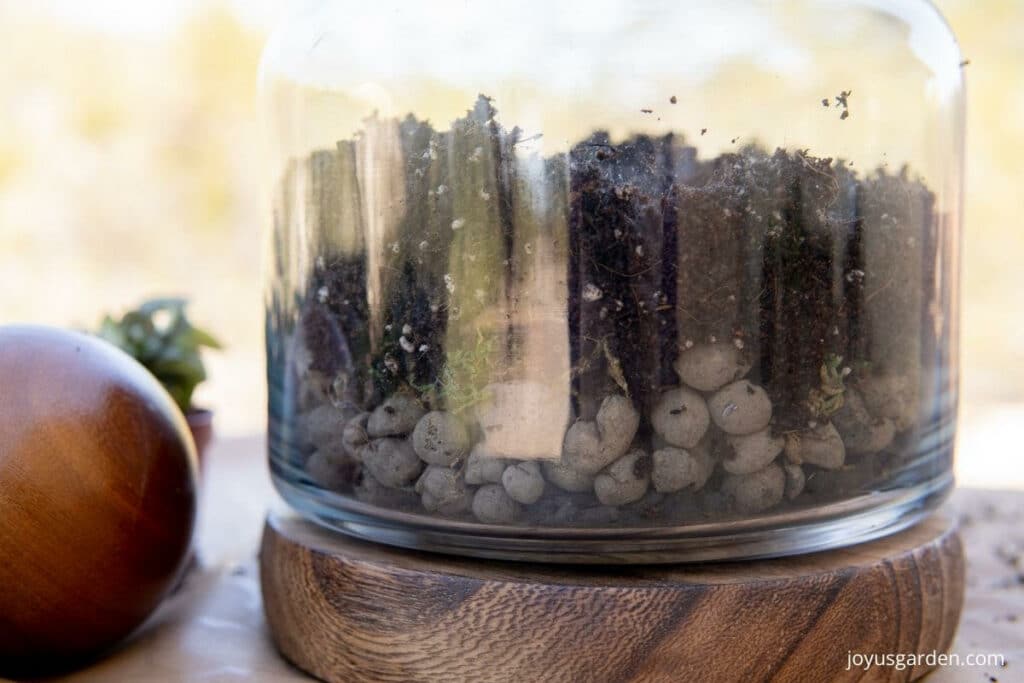
Terrarium Care
Place yours in a spot where it doesn’t receive direct sun. Indirect sunlight is fine. The sun’s rays will heat up the glass fast and your little plants will burn.
The care of open terrariums is different from closed terrariums.
Closed terrariums are practically self-sustaining. If the soil mix and plants are wet when planting, your terrarium should only need a sprinkle once or twice a year.
I water terrariums around the edges and a bit in the middle. I like a small can with a long neck to control the amount of water going in.
I use filtered water but some people prefer to use distilled water. Your tap water may be high in minerals which can eventually burn plant roots.
How often you’ll have to water depends on a few factors like temperature, lights, soil composition, etc. Below are generalizations:
Closed – water every 6 months or so.
Open – As needed. I’ll have to see how mine dries out and get back to you in a few months.
Condensation can build up in closed terrariums. You can wipe it off the glass (with something like a soft cloth attached to a chopstick) and crack the top open for a bit.
Good To Know About Terrarium Making
Plants that like humidity do best in terrariums.
Trim dead or broken leaves off before planting as this is easier.
It’s a good idea to give plants room to grow.
Keep your terrarium out of the direct sun.
Go easy on the watering. Just a bit as needed. Avoid soaking the foliage.
Once growing, you may have to prune plants that are crowding out others.
Your terrarium may become overgrown and will need to be repotted and redone.
Condensation will build up in a closed terrarium.
Terrarium DIYS are fun to do with your kids. They also make great gifts and party favors. Give your first terrarium a try, just like Brielle. You’ll be hooked!
Happy gardening,



